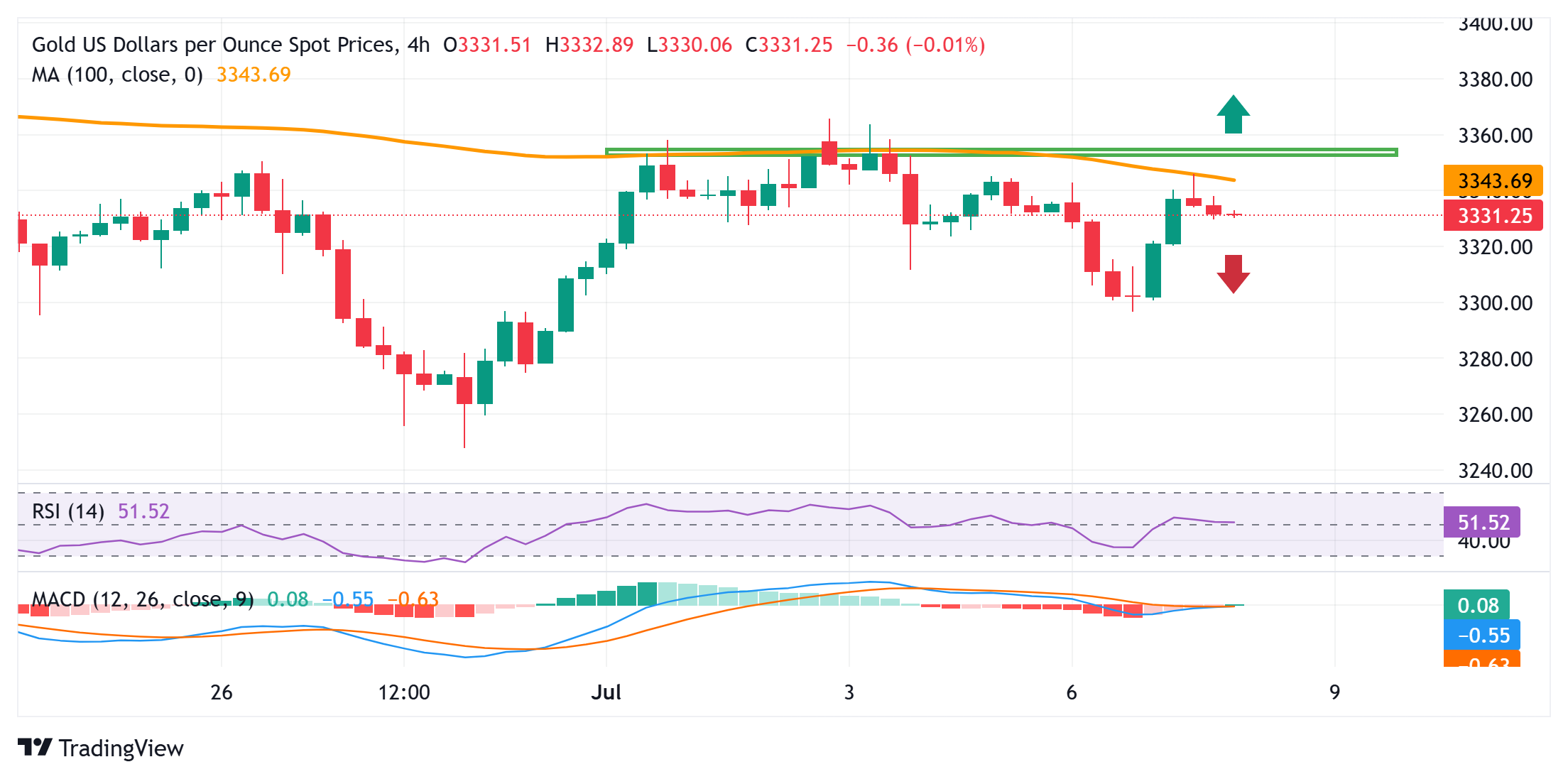Gold price drifts lower as reduced Fed rate cut bets offset trade jitters
- Fed Chair Candidate: What Would a Hassett Nomination Mean for U.S. Stocks?
- After the Crypto Crash, Is an Altcoin Season Looming Post-Liquidation?
- The 2026 Fed Consensus Debate: Not Hassett, It’s About Whether Powell Stays or Goes
- AUD/USD holds steady below 0.6550 as traders await Australian GDP release
- AUD/USD sticks to gains above 0.6600, highest since late October after Aussie trade data
- AUD/USD holds steady above 0.6600; remains close to two-month high ahead of US PCE data

Gold price attracts fresh sellers amid diminishing odds for a rate cut by the Fed in July.
Concerns about the economic fallout from Trump’s tariffs weigh on investors’ sentiment.
The emergence of some USD weakness might contribute to limiting losses for the XAU/USD pair.
Gold price (XAU/USD) struggles to capitalize on the previous day's goodish rebound from a one-week low – levels just below the $3,300 mark – and trades with a mild negative bias during the Asian session on Tuesday. Expectations that US President Donald Trump's tariffs would underpin US inflation in the coming months and force the Federal Reserve (Fed) to keep interest rates steady act as a headwind for the non-yielding yellow metal. However, a combination of factors might hold back traders from placing aggressive bearish bets and help limit the downside for the commodity.
Investors remain on edge amid worries about the potential economic fallout from Trump's so-called reciprocal tariffs. This, along with persistent geopolitical risks, takes its toll on the global risk sentiment and should benefit the safe-haven Gold price. Apart from this, the emergence of some US Dollar (USD) selling could offer some support to the precious metal. Traders might also opt to wait for more cues about the Fed's rate-cut path before positioning for the next leg of a directional move. Hence, the market focus will remain glued to the release of the FOMC meeting minutes on Wednesday.
Daily Digest Market Movers: Gold price is pressured by expectations that the Fed will keep rates elevated
US President Donald Trump extended the deadline for the imposition of reciprocal tariffs to August 1 and also released letters outlining higher trade tariffs against a slew of Asian and African countries. Trump also threatened that any Country aligning with the anti-American policies of BRICS will be charged an additional 10% tariff and there will be no exceptions to this policy.
The Federal Reserve is now expected to keep interest rates elevated in anticipation of worsening inflation as a result of higher import taxes and a still resilient US labor market. This, in turn, lifted the US Dollar to a nearly two-week high on Monday and turned out to be a key factor that undermines demand for the non-yielding Gold price during the Asian session on Tuesday.
The USD bulls, however, seem reluctant amid the uncertainty over the potential economic impact of Trump's tariffs and US fiscal concerns. Adding to this, a fresh wave of the global risk-aversion trade – as depicted by a sea of red across the global equity markets – could lend support to the safe-haven precious metal and warrants caution for aggressive bearish traders.
In the absence of any relevant market-moving economic data from the US on Tuesday, the market focus will remain glued to the release of FOMC meeting minutes on Wednesday. Investors will look for more cues about the Fed's rate-cut path, which, in turn, will drive the USD demand in the near term and provide a fresh directional impetus to the non-yielding yellow metal.
Gold price seems vulnerable while below the 100-SMA on H4; bears need to wait for acceptance below $3,300

The overnight goodish rebound faced rejection near the 100-period Simple Moving Average (SMA) on the 4-hour chart. The said barrier is currently pegged near the $3,347-3,348 region and is followed by $3,358-3,360 supply zone. A sustained strength beyond the latter could trigger a short-covering move and allow the Gold price to reclaim the $3,400 round figure.
On the flip side, the $3,300-3,295 area might continue to protect the immediate downside, below which the XAU/USD pair could accelerate the fall towards the next relevant support near the $3,270 horizontal zone. The downward trajectory could get extended and eventually drag the Gold price to the $3,248-3,247 region, or the June monthly swing low.
Read more
* The content presented above, whether from a third party or not, is considered as general advice only. This article should not be construed as containing investment advice, investment recommendations, an offer of or solicitation for any transactions in financial instruments.

